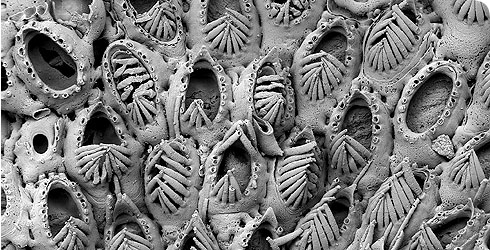Cauloramphus disjunctus
Cauloramphus disjunctus is an example of a cheilostome bryozoan living today in the seas around Japan.
Colonies of Cauloramphus disjunctus grow as small patch-like encrustations on the surfaces of rocks and shells.
Beautifully preserved specimens of this bryozoan can also be found as 1 million-year-old fossils in northern Japan.
Cauloramphus disjunctus plays an important part in work to understand how bryozoans have evolved defensive structures by modifying the feeding zooids that make up their colonies.
Species detail
-

Evolution
Cheilostome bryozoans have, over the past 100 million years, evolved ways to protect themselves against predators. Take a closer look at how they’ve adapted.
-

Distribution and habitat
This species can be found today in the seas around Japan and also from fossil localities in the same region that are 1 million years old.
-

Biology
Colonies of Cauloramphus disjunctus form thin encrustations on hard surfaces in the sea. Discover what gives this bryozoan its name ‘disjunctus’.
-

Behaviour
Cauloramphus disjunctus has never been observed alive, but almost certainly feeds on tiny plankton captured by feeding zooids of the colony.
-

References
Get more reference material for Cauloramphus disjunctus.
Images
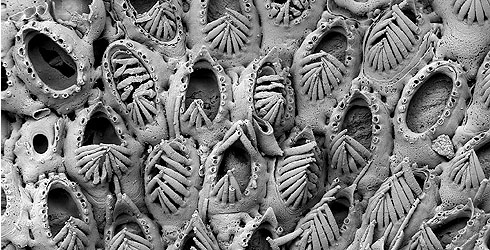
Scanning electron microscope image of part of a fossil colony of Cauloramphus disjunctus.
© P Taylor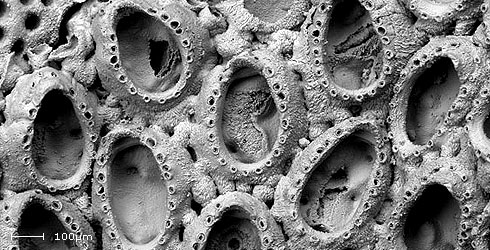
Zooids from a fossil colony of Cauloramphus disjunctus in which the spines have broken off.
© P Taylor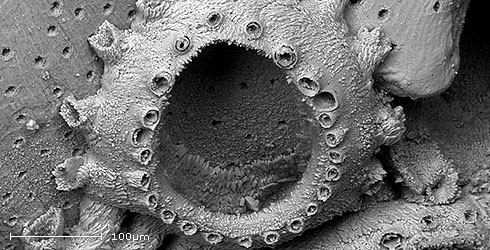
Zooid from the edge of a fossil colony of Cauloramphus disjunctus showing tubules that would have formed links with later-formed zooids.
© P Taylor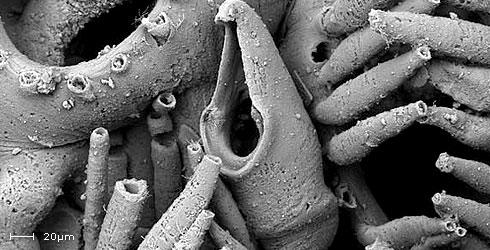
Avicularium (defensive polymorph) wedged between the spines of a fossil colony of Cauloramphus disjunctus.
© P Taylor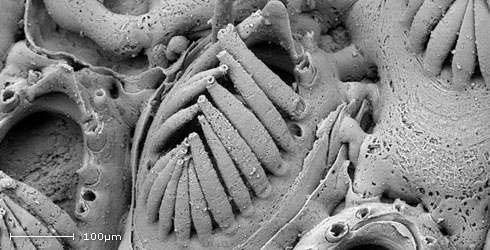
Fossil Cauloramphus disjunctus with remarkable preservation of protective spines.
© P Taylor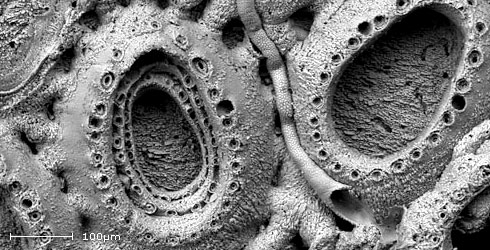
Zooids of a fossil colony of Cauloramphus disjunctus, that on the left hosting later zooids of successively smaller size, like a Russian Doll.
© P Taylor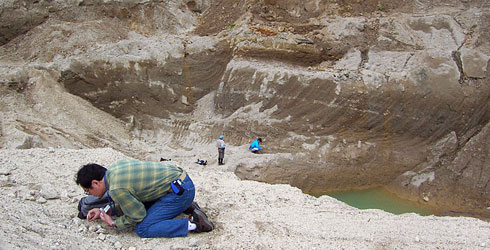
Small quarry at Kuromatsunai exposing one million-year-old gravels containing abundant fossil specimens of Cauloramphus disjunctus
© P Taylor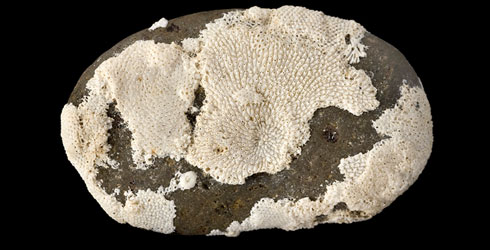
Cobble from Kuromatsunai encrusted by fossil bryozoans, including Cauloramphus disjunctus (scale bar = 5mm).
© P CrabbAbout the author
A word from the author
'I first became interested in bryozoans as an undergraduate student when I found some Jurassic bryozoans while undertaking a geological mapping project. It didn’t take long before I became totally enthralled by these fascinating, yet poorly understood, colonial animals. During the last 35 years I have been fortunate enough to visit geological localities all around the world in search of fossil bryozoans. If I was asked which of these excited me most, I would have to say Kuromatsunai in northern Japan, a small quarry teeming with Pleistocene bryozoans, including Cauloramphus disjunctus.'
